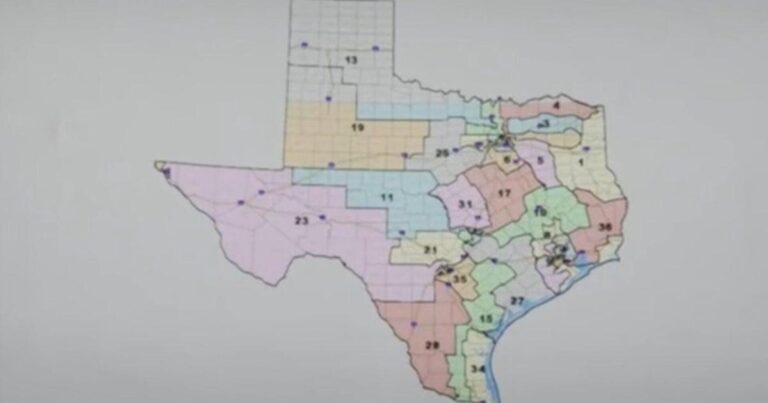Texas GOP Unveils Partisan Congressional Redistricting Plan
Texas Republicans have introduced a new congressional district map that has immediately drawn sharp criticism from Democrats and voting rights organizations. Observers contend the redistricting blueprint is engineered to entrench Republican dominance by concentrating Democratic voters into fewer districtsŌĆöa textbook example of gerrymandering. This strategy is widely viewed as an effort to bolster the GOPŌĆÖs legislative majority in Texas, potentially shaping policy directions for the foreseeable future.
Highlights of the proposed district realignment include:
- Marked decrease in competitive districts, curtailing Democratic electoral opportunities.
- Fragmentation of metropolitan areas with strong Democratic support to weaken their voting power.
- Redrawing boundaries to enhance rural and suburban Republican representation.
| District | Prior Political Lean | Projected Political Lean | Shift in Voter Demographics |
|---|---|---|---|
| District 15 | Highly Contested | Strong Republican | +8% Republican voters |
| District 22 | Democratic Majority | Narrowed Democratic Edge | -5% Democratic voters |
| District 30 | Solid Democratic | Competitive | -10% Democratic voters |
Incumbents and Trump Supporters Gain from Redistricting
Detailed evaluations of the new congressional map reveal a deliberate effort to protect sitting representatives and key allies of former President Donald Trump. The redistricting plan strategically reshapes districts to fortify Republican incumbentsŌĆÖ voter bases, reducing the likelihood of successful challenges. This approach has raised alarms about the diminishing fairness of electoral competition and the potential weakening of democratic representation.
The mapŌĆÖs configuration clearly favors Trump-aligned lawmakers by dissecting urban and suburban districts that traditionally lean Democratic, thereby dispersing opposition votes and reinforcing GOP control. The table below illustrates the shift in district competitiveness and partisan advantage:
| District Category | Before Redistricting | After Redistricting |
|---|---|---|
| Secure Incumbent Districts | 18 | 24 |
| Competitive Districts | 10 | 4 |
| Trump-Aligned Beneficiaries | 7 | 12 |
- Partisan enclaves are reinforced through boundary adjustments.
- Suburban districts are segmented to dilute opposition voting blocs.
- Demographic engineering is employed to solidify political loyalty.
Legal Experts Anticipate Challenges Over Gerrymandering Practices
Legal scholars and civil rights advocates have voiced significant concerns about the fairness of the Texas congressional map, warning that it may violate constitutional protections by manipulating district lines to favor certain political factions. The plan appears to marginalize minority voters and opposition groups, raising the prospect of multiple lawsuits alleging violations of the Voting Rights Act and claims of unconstitutional partisan gerrymandering.
Primary legal issues identified include:
- Racial Gerrymandering: Potential intentional dilution of minority voting strength through district design.
- Partisan Manipulation: Map structured to disproportionately advantage Republican candidates aligned with Trump.
- Litigation Outlook: Civil rights organizations are preparing to challenge the map in federal courts.
| Legal Concern | Potential Consequence |
|---|---|
| Voting Rights Act Breach | Federal court injunction requiring map revision |
| Partisan Gerrymandering | Possible Supreme Court review |
| Minority Vote Suppression | Mandated redrawing of districts |
Rising Demand for Independent Redistricting Commissions
In response to the contentious new map, there is growing advocacy for establishing an independent redistricting commission in Texas. Proponents argue that removing partisan actors from the redistricting process would enhance transparency, fairness, and public trust. Such commissions, already operational in states like California and Arizona, aim to prevent political manipulation and ensure district boundaries reflect genuine demographic and community interests.
Reform advocates emphasize the following priorities:
- Creation of a nonpartisan body to oversee redistricting efforts.
- Open public access to proposed maps and the criteria guiding boundary decisions.
- Protections to prevent dilution of minority voting strength.
- Regular updates to district lines based on accurate population data.
| State | Redistricting Authority | Partisan Influence | Reform Status |
|---|---|---|---|
| Texas | State Legislature | Republican-Controlled | Reform Pending |
| California | Independent Commission | Nonpartisan | Implemented |
| Arizona | Independent Commission | Nonpartisan | Implemented |
| Florida | State Legislature | Republican-Controlled | Partial Reform |
Conclusion: Future Implications of Texas Redistricting
The unveiling of TexasŌĆÖs new congressional map by Republican lawmakers is poised to have significant political repercussions both within the state and nationally. By crafting districts that appear tailored to reinforce support for former President Trump and his allies, the GOP has reignited contentious debates over the fairness and integrity of the redistricting process. While supporters argue the map reflects legitimate political realities, critics warn it undermines equitable representation. The coming months will be critical in determining how these new boundaries influence TexasŌĆÖs political dynamics and the broader balance of power in Congress.



